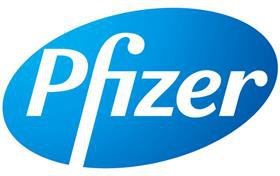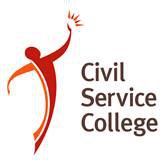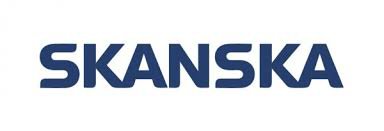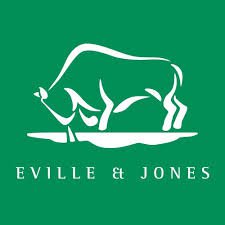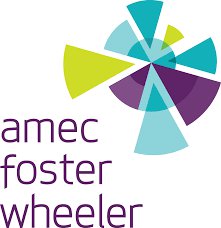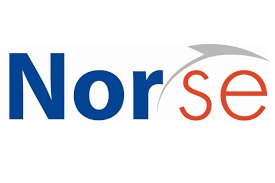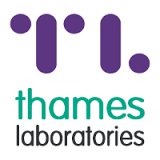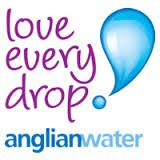A
Accelerated, Restricted or Negotiated Procedure
The length of time of the tender or procurement response process may be shortened to accommodate extraordinary or emergency circumstances.
Accelerated Open Procedure
Quicker timeframes for Open Procedures.
Added Value Services
Services or outcomes that exceed the mandatory or expected objectives of a requirement.
Aggregation
Consolidation of the value of separate contracts for the same supply contract or service.
Alcatel Mandatory Standstill Period (or just ‘Standstill Period’)
Minimum 10-day period following a decision to award a contract tendered via OJEU. Its aim is to allow unsuccessful bidders the opportunity to challenge the decision before the contract is signed. Named after two linked European Court of Justice cases known as the Alcatel case.
Award (or Evaluation) Criteria
The criteria by which a contract is to be awarded. See evaluation criteria.
Accordion Process
This is a process that takes a flexible view of bidding that allows for a contraction of process steps when timeframes are tight and an expansion to encompass every possible step when time is not an issue.
Action Caption
The accompanying title of a bid graphic that explains its relevance to the narrative.
Active v. Passive Voice
Active voice makes documents stronger by showing responsibility or giving credit for an action. When we avoid showing responsibility, we often don't give enough information to explain the problem and how to fix it. Often, we use a form of the passive called the "cut passive" and never identify the doer of the action. This form sounds vague and abstract.
Cut Passive: New requirements (subject) were introduced (action) to strengthen the banking system.
Active: The Banks Act of 1985 (subject) introduced (action) new requirements (object) to strengthen the banking system.
By eliminating the helping verb, the active voice sentence generally uses fewer words to communicate the same information.
Passive: Mr. Doe (subject) was told (action) by the bank official that he would need to provide additional information. (16 words)
Active: The bank official (subject) told (action) Mr. Doe (object) he would need to provide additional information. (13 words)
Active voice more closely resembles spoken language; hopefully ideal spoken language. When we speak, we generally use the active voice without thinking. Our writing should become that automatic.
You would never say:
Passive: My car (subject) was driven (action) to work by me.
Or:
Passive: Breakfast (subject) was eaten (action) by me this morning.
Instead, you would say:
Active: I (subject) drove (action) my car (object) to work.
And:
Active: I (subject) ate (action) breakfast (object) this morning
Answer Analysis
The process of analysing an answer given in a bid to evaluate it against the scoring criteria of the bid.
Alternative Bid/Proposal (or Variant Bid/Proposal)
A solution offered which deviates from the tender specification. This will be offered because the achieved outcomes will offer the client an improved or increased outcome or solution. It may provide them with greater cost efficiency. Alternative bids should be offered in addition to the required solution.
B
BAFO (Best and Final Offer)
The detailed and fully priced offer submitted by a respondent for a contract, which represents their lowest price.
Benchmarking
A process of continuously measuring and comparing an organisation’s processes against comparable organisations. It is used to gain information to help performance improvement e.g. “best-in-class” achievement.
Best Practice
Proven and documented working practices that provide optimum operational performance within a specific business environment e.g. ‘best in field’.
Better Quality Services – BQS
Guidance for central government departments on the creation of public/private partnerships through market testing and contracting out.
Bid Management
The process of managing a tender submission for a contract and managing the bid team.
Bid (also: Proposal, Tender, Submission, Response et al)
The written document detailing the solution, benefits and commercial model you are proposing based on the customer’s specific objectives.
Bid Value Matrix (BVM)
A unique tool developed by Bid Perfect for planning and managing a bid project. The BVM develops the value argument in a logical and compelling way and allows the easy identification of bid weaknesses, allowing them to be addressed. The BVM is also used as a differentiator in written bids/proposals to summarily capture the value of the entire bid (to the customer) in just a few pages, using a simple grid. The BVM has been adopted by several large organisations as a simpler alternative to traditional storyboarding.
Bid Kick-Off Meeting
The kick-off meeting is the first time all (or as many as possible) of the stakeholders in a given bid come together in one place to discuss, analyse and create the initial strategy for the bid. In summary, the aim is for everyone involved to:
ü Be of one mind and to have agreed the general strategy (the specific details may be covered but this is more likely to be an agreed set of post-meeting tasks)
ü To have agreed the division of work, the roles and responsibilities of all concerned
ü To have agreed the timelines, key milestones and deadlines
ü To have identified and provisionally agreed the key win themes for the bid
ü To agree further actions which will take place prior to the next meeting of the bid team
ü To have conducted a joint read through of key areas of the ITT
ü Agree clarification questions which may need to be asked of the client
A successful bid kick-off is critical to taking the first qualitative step on the road to a producing a winning document.
Bid/No Bid
The decision process an organisation deploys to decide if the opportunity is appropriate to bid for. Key factors may include elements such as: timeline/deadline, available resource, fitness of solution to meet customer objectives, pricing models and sustainable margins, and level of relationship.
Bid Capture
Bid capture planning is the generalised process organisations use to identify new business opportunities and position themselves against a market backdrop including such elements as political climate, environmental considerations, economic factors, etc. (see PESTLE). A capture plan is intended to ensure your potential customer is given every opportunity to prefer you over a competitor in advance of proposals being submitted. Capture planning is linked into your overall business planning. Different companies interpret capture planning in varying ways and the definition given here should not be taken to be…well, as definitive.
Bid Pursuit
Bid Pursuit is the process followed to win a specific opportunity and, like the definition of Bid Capture, can be (and often is) described fluidly by different organisations. For our purposes here, we will say that the pursuit element of winning bids is the entire process from initial opportunity identification through to award.
Benefits v. Features
People don’t buy what it is, they buy what it does. A benefit is the positive outcome a customer will receive from a particular feature of your product or service.
Bid Library (see also Tender Library)
The place where you keep everything you may need to write your bid. It is a repository for constantly used documents (e.g. insurance certificates, quality accreditations, CVs, case studies, etc.) and benchmarked answers to commonly posed questions. The correct use of previously written answers improves efficiency when writing bid responses and reduces the time required. The content in a bid library should be constantly evolving in response to the feedback you receive from customers who have received one of your bids and all official documentation and information should be current.
Bid Software
Bid software (such brands as Qividian or Qorus) are, essentially, content management databases which help you to be more efficient when writing bids. However, there is an argument to suggest the use of software for writing bids leads to more formulaic and generic bids.
Boilerplate
A standard template for writing bid with standard sections and content.
C
CTA - Call to Action
A call to action is a marketing term used extensively in advertising and selling. It refers to any device designed to prompt an interaction. A CTA most often refers to the use of words or phrases that can be incorporated into sales scripts, advertising messages or web pages that encourage consumers to take prompt action
Common Buying Motives (Rational and Emotional)
The Emotional and Rational Common Buying Motives (ECBM and RCBM) are a simplified reduction of the reasons why procurement decisions are made. The theory has been largely developed for bids and tenders by Bid Perfect and is a central tenet of the bid training delivered by them.
Competitive Dialogue
A variation of the normal tender negotiated process, available under European Union Rules, that allows different options to be discussed before a particular solution is selected. It can be used in complex contracts where technical solutions are difficult to define or where the buyer needs the best solution to be developed.
Compliance Matrix
A document that summarises all mandatory and advisory requirements in a customer’s bid document and your levels of compliance in all aspects. The point is to offer an at-a-glance overview of how compliant you are.
Common Procurement Vocabulary (Codes) – CPV
Codes used throughout the European Union to generically describe products or services. The use of CPV codes by public sector purchasers to define their requirements in a Contract Notice is mandatory. CPVs can also be used in Non-OJEU Contract Notices to classify expenditure. (See OJEU).
Consortium
An unincorporated group of firms or individuals which has been formed with a view to pooling their strengths and resources to win contracts that they would not be able to win on their own.
Contextuality
A way of writing that uses phrasing and general language that will be familiar to the reader making your document a more comfortable reading experience. Good use of contextuality means you are reflecting the customer’s view of the world.
Core Competencies
What an organisation does well – its key business – as opposed to other products or services that it can or could offer.
Corporate Governance
An organisation’s system of rules, procedures etc. used to manage and fulfil its legal, financial and ethical obligations.
Coloured Review Process
The following definitions are the standard but many companies have variations and different names or functions for teams.
Purple Team: Assesses the probability of winning and alignment with organisational goals
Blue Team 1: Reviews initial capture strategy and capture plan
Black Team: Predicts competitor’s probable bid/solution/pricing
Blue Team 2: Reviews updated capture plan and solution architecture
Pink Team: Reviews storyboards to confirm solution and validate proposal strategy
Green Team: Reviews commercial aspects of bid
Red Team: Reviews final draft of bid to predict how the evaluator will score the bid
Gold Team: Approves final commercial model and pricing
White Team: Compiles lessons learned from initial capture planning, through proposal development to contract award.
Culture
An organisation’s management, ethics, style and values.
D
Debriefs
Giving positive, constructive feedback to competing suppliers on their performance at certain stages of the procurement process. It affords an opportunity for a supplier to improve performance in the future. In public sector procurement, a debrief is a legal obligation from the public body. There is no such obligation in private sector procurement.
Deliverables
A collective name for the tangible goods and/or services that the supplier or contractor is required to supply under agreement.
Diversity
Promoting equality and diversity is a duty the entire UK government takes very seriously, and is a responsibility shared by all government departments. Also see Equal Opportunities.
E
EOI – Expression of Interest (see Initial Expression of Interest – IEO)
Equal opportunities
The practice of ensuring that all employees and users of services receive fair and equal treatment. Also see Diversity.
Evaluation Criteria
Tender/bid evaluation criteria are the method(s) by which a tender response is marked. Related to award criteria.
Evidence (see also: Proof)
Evidence or proof is the material you provide to support your claims in a bid. People generally buy what they believe in, so the more compelling your evidence, the more likely they are to believe you. Typical evidence includes accreditations, audits, surveys, trail periods, third party examinations, testimonials. awards and references. Evidence from independent sources is always the best to use, if you have it available.
Executive Summary
The Executive Summary is a document that normally precedes the main bid and which is designed to effectively summarise your entire bid offering. The executive summary is, in effect, a sales pitch and must contain certain key elements:
- A description of the customer’s primary objectives
- Your key solutions elements
- Compelling elements of your commercial model
- Examination of your key win themes
- Key value/benefits highlighted with quantification
- Reference to particularly compelling evidence you are providing
- What happens in the next steps, should you be awarded the contract
As well as the above, you should also be using a narrative style that talks to the customer and is focused on the them. A good tip is to start by writing a paragraph about their business and not your own.
An executive summary is typically two to four pages in length but a good rule is try to build a document that is about one page for every forty pages of bid.
F
Features (see Benefits v. Features)
Framework Agreement
A formal agreement with selected (or short-listed) suppliers. The purpose is to establish the terms of contract – in particular with regard to price and quantity. In other words, a framework is a general term for a contract with a group of suppliers. It sets out terms and conditions for specific purchases (call-offs) that can be made during the period of the contract.
G
Ghosting
Ghosting is the way of calling into question the abilities and solution offered by your competition using an indirect and subtle narrative approach. Without naming them, you can use your text to undermine competitors by highlighting their weaknesses (perhaps poor track record, lack of experience, poor financial position, etc.) ultimately creating doubt in the mind of the evaluator(s). You can also use the technique as a way of drawing attention to your strengths in any given area. Ghosting is generally an advanced bid writing practice which, when used expertly can be an extremely effective counter measure against competitors.




